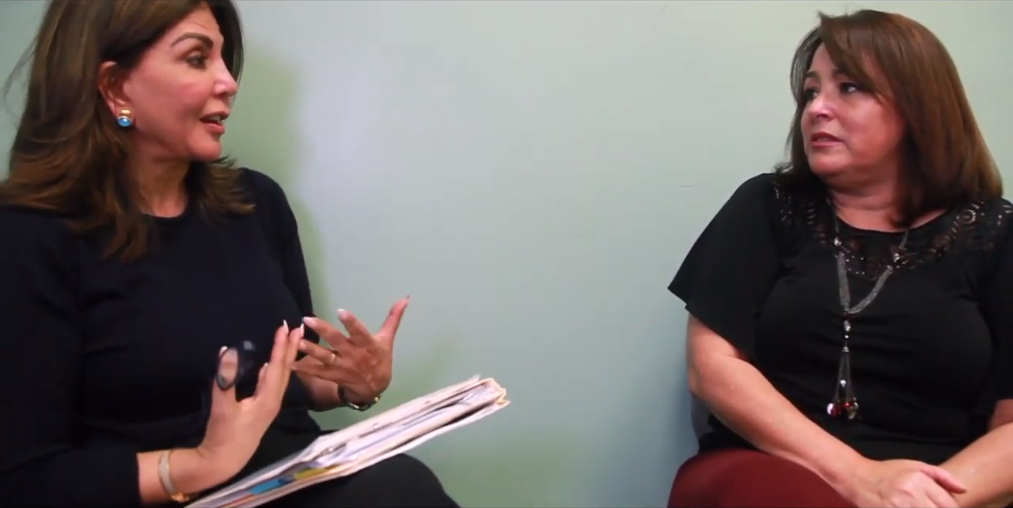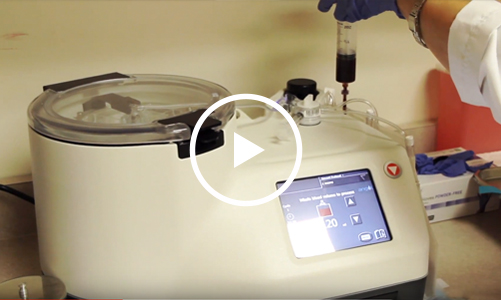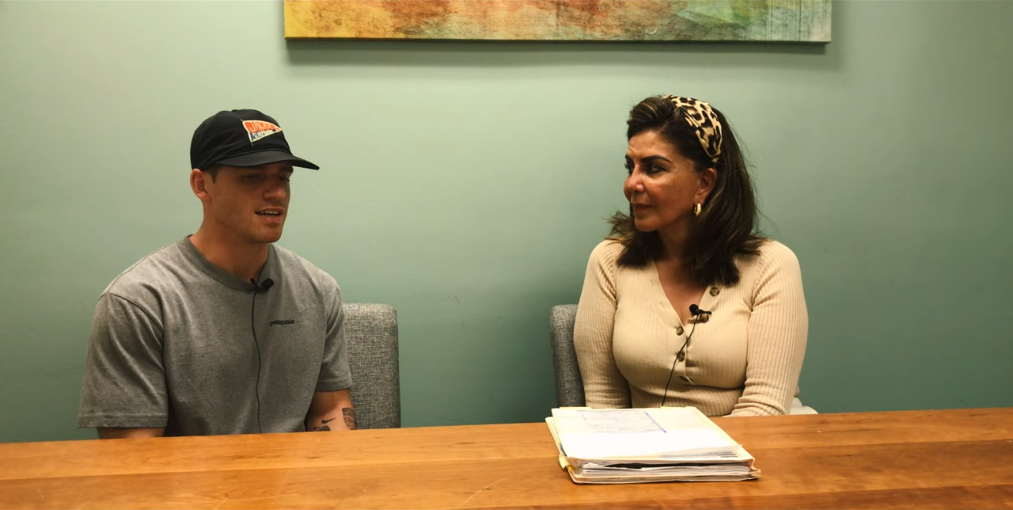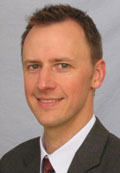Platelet Rich Plasma (PRP) Los Angeles
By Steven Meier
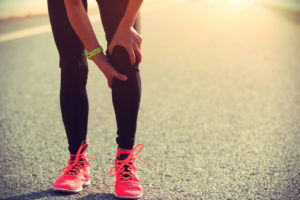 Platelets are tiny, cell-like structures that are an essential component in blood. They are derived from megakaryocytes manufactured in bone marrow. Platelet-rich plasma (PRP) is made by drawing blood from a patient to extract and concentrate their platelets. A well-known function of platelets is to induce hemostasis, the clotting of blood to stop bleeding if a blood vessel is cut or damaged. But these multi-tasking structures are also intimately involved in the tissue healing process.
Platelets are tiny, cell-like structures that are an essential component in blood. They are derived from megakaryocytes manufactured in bone marrow. Platelet-rich plasma (PRP) is made by drawing blood from a patient to extract and concentrate their platelets. A well-known function of platelets is to induce hemostasis, the clotting of blood to stop bleeding if a blood vessel is cut or damaged. But these multi-tasking structures are also intimately involved in the tissue healing process.
Platelets are packed with an abundance of different proteins, growth factors and other cytokines that that promote healing by stimulating cell growth and proliferation. These include:
- Epidermal Growth Factor (EGF) stimulates cell growth, proliferation, and differentiation, essential for wound healing and injury recovery.
- Vascular Endothelial Growth Factor (VEGF) – is a protein involved in angiogenesis and vasculogenesis, the process of creating new blood vessels to restore the oxygen supply to tissues when blood circulation is compromised following an injury. Moreover, VEGF is also involved in generating muscle tissue and bypassing blocked blood vessels.
- Fibroblast Growth Factor (FGF) – promotes angiogenesis, the formation and growth of new blood vessels. It also contributes to wound healing and plays a role in embryonic development.
- Platelet-Derived Growth Factor (PDGF)– attracts macrophages and fibroblasts to the zone of injury, regulates cell division and growth promotes collagen growth and proteoglycan synthesis.
- Transforming Growth Factor (TGF) – promotes angiogenesis, the the growth of new blood vessels.
- Collagen Stimulating Growth Factor (CSGF) – stimulates granulocyte and macrophage proliferation for the growth of healthy tissue and blood cells.
- Keratinocyte Growth Factor (KGF) –migrates, differentiates, and proliferates keratinocytes to optimize conditions for healing and formation of new skin.
- Insulin-Like Growth Factor I (IGF-1) – stimulates and regulates growth of almost every cell in the body, especially muscle, cartilage and bone.
The growth factors found in platelets play an essential role in the repair, replacement, and regeneration of tissues by promoting hemostasis, cell proliferation, migration, and differentiation. They stimulate the formation of new blood vessels and tissue cells. The growth factors work synergistically in a physiologically balanced manner.
Therapeutically, platelet-rich plasma (PRP) is often used to stimulate the healing of soft tissue to heal wounds and degenerated tendons and to reduce painful inflammation associated with injured or arthritic joint cartilage. The concentrate of growth factors and cytokines in PRP can be thought of as “tools in a toolbox” for treating injured or distressed tissue and can be used alone or in combination with other treatment modalities for a variety of musculoskeletal conditions.
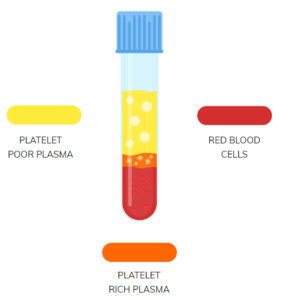
How is PRP obtained?
To create PRP, a sample of the patient’s blood is obtained through a standard blood draw, placed into test tubes, and then spun in a centrifuge to separate the blood components into distinct layers. The red blood cells separate from the plasma, with the red cells concentrating in the lower half of the test tube. This leaves plasma, the liquid component of blood in the upper half. Platelets and white blood cells then congregate within a thin, intermediate layer called the “buffy coat” in the middle of the test tube at the bottom of the plasma fraction but above the red blood cells. The buffy coat is the part that is extracted to use as PRP. The PRP can then be injected into a joint or tissue where the therapeutic effects are needed.
What can PRP be used to Treat?
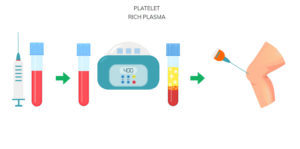
There are a variety of conditions that PRP therapy is being used to treat. Some of these conditions include.
- Osteoarthritis
- Chondromalacia
- Tendinosis & Tendinopathy
- Non-healing wounds
- Torn tendons
- Muscle injuries
- Joint injuries
PRP is commonly used in the following body parts:
- Spine
- Shoulder
- Elbow
- Hip
- Knee
Some specific applications for PRP include the following conditions:
- Osteoarthritis of the Knee
- Rotator Cuff Tears
- Elbow Tendinopathy
Side Effects
PRP therapy is very well tolerated and without significant adverse effects since it uses the patient’s own tissue product. When performed by a skilled practitioner, adverse effects are normally minimal and temporary:
- Local soreness at the injection site
- Mild swelling
- Joint stiffness
PRP: Leukocyte-Rich vs. Leukocyte-Poor
When PRP is created by spinning the blood in a centrifuge, white blood cells called leukocytes collect within the same buffy coat layer as the platelets. Leukocytes are white blood cells that function as part of the immune system and play a role in inflammatory reactions. Depending on the application, having leukocytes in PRP may or may not be desirable since some leukocytes promote inflammation. In some treatment situations, the goal is to stimulate tissue regeneration. For instance, when treating tendinosis or tendon degeneration, inflammation can be helpful to stimulate a healing response. In this case, PRP with a high concentration of leukocytes may be desired. However, when treating a chronically inflamed, arthritic joint, the goal of treatment if often to reduce inflammation. In this case, injecting PRP with leukocytes can be detrimental by flaring up the inflammation further. To naturally reduce inflammation, PRP with a low concentration of leukocytes is preferable.
Standard, unprocessed PRP preparations inherently contain many white blood cells and are considered to be leukocyte-rich. But since leukocyte-rich PRP can cause unwanted painful inflammatory reactions after injection, this is not desirable for certain applications. The solution to this is to perform additional processing steps to reduce the leukocyte concentration in the PRP. PRP in which leukocytes have been removed is called leukocyte-poor PRP. Leukocyte-poor PRP is preferred for cases where an inflammatory reaction is not desired.
PRP Recovery
Following PRP treatment, your physician may recommend rest of the affected area for a specific amount of time. Most people can continue daily activities within a few days following PRP injections, once any discomfort and swelling decrease.
- Avoid taking anti-inflammatory medications as these are known to interfere with platelet activity. Acetominophen is an ideal pain-reliever to take if necessary.
- Elevation
Pre-Injection Precautions
Before receiving a PRP injection:
- Avoid corticosteroid injections before the treatment.
- For two weeks before the procedure, avoid taking anti-inflammatory medicines such as ibuprofen and aspirin that are known to inactivate platelet function.
- If you are taking anticoagulation medication, make sure to discuss this with your treating physician.
- Drink plenty of fluids to make sure you are well-hydrated prior to the procedure.
PRP FAQ
- What is the success rate for treating using PRP?
- How long will the effect of PRP last?
- Is PRP the same as a cortisone injection?
- Is PRP a painful procedure?
- Is there a limit to what I can do after PRP?
- How many PRP injections will I need?
The success rate for PRP varies depending on different factors. The condition being treated plays a significant role. It also depends on the patient’s health status, age, and treatment protocol. For example, Achilles tendonitis has a success rate of 70-80%.
It is nearly impossible to measure how long the effect will last because it is different for everyone. It highly depends on the underlying disease process and whether the area has suffered a recurrent injury. Some people can go months or even years before needing to repeat treatment.
No, they are different. While cortisone injections are used to help reduce pain and inflammation, they do not alter the underlying decease. Cortisone injections are a synthetic corticosteroid injected in the joints or areas of soft tissue and often needs to be repeated. PRP may not need repetition.
The pain experienced varies from patient to patient, depending on their pain tolerance. However, the majority of patients report a mild to moderate range of discomfort with the PRP injections. A needle is used to draw blood from an arm vein, and then small needles are used to perform the injections.
Your physician will likely advise you to limit strenuous activity for some time. Do not take anti-inflammatory medications such as ibuprofen because they inhibit the body’s ability to heal. Also, make sure to drink plenty of fluids following your treatment. More specific instructions will be provided after the procedure is completed.
Typically one to three injections might be needed. However, it all depends on the location of the condition being treated and its chronicity. Some patients can be successful with one injection. In contrast, others may require several throughout a period to eliminate pain or reduce it to an acceptable level.
